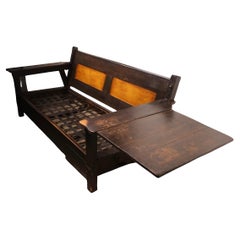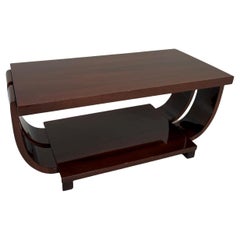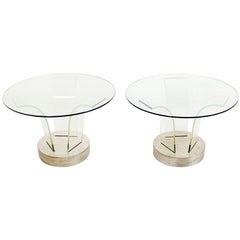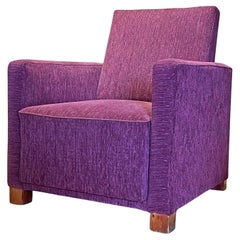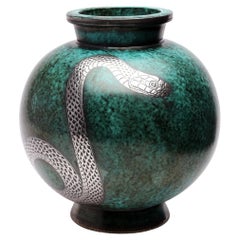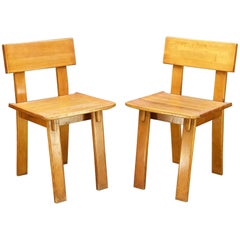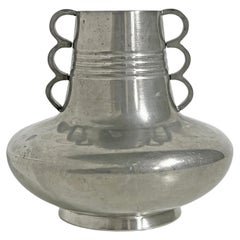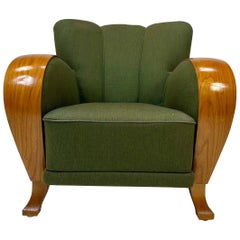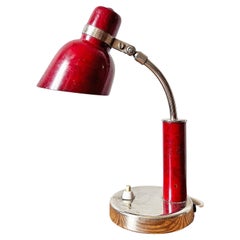1930s Modern Furniture
Mid-20th Century American Rustic Sofas
Iron
Vintage 1930s American Art Deco Coffee and Cocktail Tables
Maple
Vintage 1930s American End Tables
Vintage 1930s Swedish Scandinavian Modern Lounge Chairs
Fabric
Early 20th Century Swedish Scandinavian Modern Ceramics
Silver
Vintage 1930s American Mid-Century Modern Chairs
Maple
Vintage 1940s Swedish Scandinavian Modern Vases
Pewter
Early 20th Century Swedish Scandinavian Modern Lounge Chairs
Beech
Vintage 1930s Swedish Scandinavian Modern Table Lamps
Metal
Vintage 1930s Swedish Scandinavian Modern Table Mirrors
Pewter
Vintage 1930s Swedish Scandinavian Modern Armchairs
Pine
20th Century European Scandinavian Modern Vases
Bronze
Vintage 1930s Norwegian Scandinavian Modern Pitchers
Pewter
Vintage 1930s Swedish Scandinavian Modern Vases
Metal
21st Century and Contemporary Portuguese Art Deco Armchairs
Velvet, Wood, Alpaca, Mohair, Bouclé, Jacquard, Linen, Ebony, Oak, Walnut
21st Century and Contemporary Portuguese Art Deco Armchairs
Velvet, Wood, Alpaca, Mohair, Bouclé, Jacquard, Linen, Ebony, Oak, Walnut
Mid-20th Century Danish Modern Vases
Ceramic
21st Century and Contemporary Portuguese Art Deco Armchairs
Velvet, Wood, Alpaca, Mohair, Bouclé, Jacquard, Linen, Ebony, Oak, Walnut
21st Century and Contemporary Portuguese Modern Sofas
Jacquard, Velvet, Cotton, Wood
21st Century and Contemporary Portuguese Art Deco Armchairs
Gold Leaf
21st Century and Contemporary Portuguese Art Deco Armchairs
Stainless Steel, Brass
21st Century and Contemporary Portuguese Art Deco Sofas
Leather, Jacquard, Velvet, Wood, Fabric, Oak, Walnut, Lacquer
Vintage 1930s Swedish Scandinavian Modern Decorative Dishes and Vide-Poche
Bronze
Early 20th Century Persian Tabriz Persian Rugs
Wool
Early 20th Century Swedish Scandinavian Modern Dining Room Tables
Pine
Mid-20th Century Persian Malayer Persian Rugs
Wool
Vintage 1930s Swedish Scandinavian Modern Wall Mirrors
Pewter
Vintage 1930s French Art Deco Side Chairs
Fabric, Wood
20th Century Swedish Scandinavian Modern Lounge Chairs
Leather, Birch
Mid-20th Century Scandinavian Scandinavian Modern Decorative Bowls
Ceramic
Vintage 1930s Czech Mid-Century Modern Coat Racks and Stands
Brass
Vintage 1930s Swedish Scandinavian Modern Side Tables
Pine
Mid-20th Century Turkish Spanish Colonial Turkish Rugs
Wool
Early 20th Century Turkish Oushak Turkish Rugs
Wool
Early 20th Century Danish Scandinavian Modern Sofas
Fabric, Mahogany
Early 20th Century Persian Malayer Persian Rugs
Wool
Early 20th Century Turkish Oushak Turkish Rugs
Wool
Vintage 1930s Italian Mid-Century Modern Cabinets
Wood
Vintage 1930s Portuguese Mid-Century Modern Lounge Chairs
Oak, Pine
Vintage 1930s Swedish Art Deco Vases
Silver Plate
Vintage 1930s Danish Scandinavian Modern Floor Lamps
Metal, Brass
20th Century Swedish Scandinavian Modern Jars
Bronze
Early 20th Century French Mid-Century Modern Dining Room Tables
Marble
Vintage 1930s Swedish Scandinavian Modern Stools
Faux Leather
Vintage 1930s Dutch Mid-Century Modern Coat Racks and Stands
Metal
Vintage 1930s Swedish Scandinavian Modern Sofas
Velvet, Mahogany
Vintage 1930s Swedish Scandinavian Modern Carts and Bar Carts
Elm
Vintage 1930s Swedish Art Deco Decorative Bowls
Pewter
Mid-20th Century Swedish Scandinavian Modern Table Lamps
Ceramic
Vintage 1930s Scandinavian Modern Lounge Chairs
Wood
Early 20th Century Turkish Spanish Colonial Turkish Rugs
Wool
Early 20th Century Persian Tabriz Persian Rugs
Wool
Vintage 1930s Swedish Scandinavian Modern Wall Mirrors
Mirror, Birch
Vintage 1930s Swedish Scandinavian Modern Wall Mirrors
Metal
Vintage 1930s Swedish Scandinavian Modern Wall Mirrors
Wood
Early 20th Century Persian Renaissance Persian Rugs
Wool
Vintage 1930s Finnish Scandinavian Modern Tapestries
Cotton
Early 20th Century Turkish Oushak Turkish Rugs
Wool
- 1
- ...
1930s Modern Furniture For Sale on 1stDibs
How Much is a 1930s Modern Furniture?
- 1stDibs ExpertNovember 26, 2024To identify 1930s furniture, first see if you can spot a maker's mark in hidden areas, such as the back, base, inside of drawers or under tabletops and seats. Trusted online resources can help you determine who produced your furniture based on these markings, and from there, you can research more to get a rough idea of how old your item is. A piece's characteristics can also be helpful when dating furniture. Many items made during the 1930s are examples of Art Deco furniture. Art Deco furniture is characterized by geometric patterns and luxurious materials, such as shagreen, marble, mother of pearl, mirrored glass, exotic animal hides and rare woods like mahogany, ebony and zebra wood. A certified appraiser or experienced antique dealer can provide an expert opinion on when your piece was likely made. On 1stDibs, explore a range of 1930s furniture.
- 1stDibs ExpertMay 5, 2023Yes, people had record players in the 1930s. In fact, record players began to become more common during the decade and continued to grow in popularity throughout the 1940s, 50s and 60s. Thomas Edison made the first phonograph record player in 1877. Shop a variety of record players on 1stDibs.
- 1stDibs ExpertJune 30, 2023What brides wore in the 1930s varied. Some wore long flowing dresses made of satin or silk. Long sleeves were popular and designs often featured only minimal embellishments like appliqués and beading. Because many people faced difficult financial situations due to the Great Depression, brides also sometimes simply wore their best dresses on their wedding days. On 1stDibs, shop a collection of vintage wedding dresses.
- What is Danish modern furniture?1 Answer1stDibs ExpertFebruary 13, 2024Danish modern furniture is the term for a style of furniture that emerged during the 1930s through the innovation of designers from Denmark. It is a subset of Scandinavian modern furniture, the warmest and most organic iteration of modernist design. The work of the designers associated with vintage Scandinavian modern furniture was founded on centuries-old beliefs in both quality craftsmanship and the ideal that beauty should enhance even the humblest accessories of daily life. Some notable Danish modern designers include Hans J. Wegner, Kaare Klint, Arne Jacobsen, Finn Juhl, Arne Vodder and Verner Panton. Shop a range of Danish modern furniture on 1stDibs.
- 1stDibs ExpertAugust 8, 2024Modern furniture is made of many different types of materials. Some modern furniture makers used natural materials like wood for frames and leather and linen for upholstery. Metals, such as aluminum, stainless steel and nickel, were also common, as were some plastics. Explore a diverse assortment of modern furniture from some of the world’s top sellers on 1stDibs.
- What is modern furniture design?1 Answer1stDibs ExpertAugust 8, 2024Modern furniture design is an overarching term for the new approach that designers began taking in the early 20th century. Many experts cite the Bauhaus movement as the start of the modern era. Its style was defined by the instructors and students at a progressive German art and design school founded by the architect Walter Gropius that operated from 1919 to 1933. In Bauhaus-style furniture, the school’s followers married industrial and natural materials in simple, geometric forms. The goal of the Bauhaus was to erase the distinction between art and craft while embracing the use of new technologies and materials. As the Bauhaus movement was emerging, so too was Art Deco. This iconic movement made an indelible mark on all fields of design throughout the 1920s and ’30s, celebrating society’s growing industrialization with refined elegance and stunning craftsmanship. Art Deco furniture makers respected the dark woods and modern metals with which they worked; they frequently incorporated decorative embellishments such as exotic animal hides as well as veneers in their seating, case pieces, living room sets and bedroom furniture. After World War II, modern design continued with the mid-century modern movement. The style is characterized by pieces that were conceived and made in an energetic, optimistic spirit by creators who believed that good design was an essential part of good living. Historians typically say that the modern approach to furniture design ended in the mid-1960s or early 1970s. Pieces made after that time may be called postmodern or contemporary. Shop a large collection of modern furniture on 1stDibs.
- What is modern style furniture?1 Answer1stDibs ExpertFebruary 22, 2021Modern style furniture has smooth shiny surfaces, straight lines, simple shapes. The general objective is a simple uncluttered look.
- 1stDibs ExpertOctober 7, 2024The difference between modern furniture and old furniture is in the specificity of the term. Generally, pieces considered modern date from between the end of World War II in 1945 and the end of the 1970s. During this period, more furniture makers mass produced pieces, and designers increasingly used new materials, such as plywood and plastic. Old furniture is not a specific term. People frequently use the term old for anything that subjectively appears aged. Explore a large selection of modern furniture on 1stDibs.
- 1stDibs ExpertMarch 31, 2023In the 1930s, phones typically looked like rotary telephones. They had either a round or square base with a numbered dial that spun when you dialed and a handset receiver with both an earpiece and a mouthpiece. A cord connected the handset to the base. Find a variety of rotary phones on 1stDibs.
- 1stDibs ExpertMay 22, 2019
Mid-century modernism first appeared in 1945 and merged a minimalist aesthetic with practicality. Mid-century modern furniture is distinguishable by its lack of decoration or extravagance and its use of clean lines, organic curves and variety of natural materials.
1stDibs ExpertFebruary 22, 2021Mid century modern furniture refers to pieces designed during the middle of the 20th century — specifically 1930s through the mid-1960s. This period represents a design and architecture movement characterized by simple shapes, clean lines, and organic materials. Some of the most famous mid century modern designers include Ray Eames, Charlotte Perriand, Isamu Noguchi and Eero Saarinen. - 1stDibs ExpertNovember 4, 2024To identify 1800s furniture, first check to see if your piece bears any maker's marks. Should you locate any, researching them using trusted online resources can help you determine the maker and age of your furniture. To determine if unmarked pieces date back to the 19th century, look for tool marks and variations in their carvings and ornamentation. Since 19th-century furniture was handmade, you should expect to find these signs of hand craftsmanship. A piece that shows no marks or inconsistencies in details is likely a contemporary machine-made reproduction. Familiarizing yourself with the characteristics of Rococo, Chippendale, Gothic Revival, neoclassical and other 19th-century styles can also be helpful. If you struggle to make an identification, consider consulting a certified appraiser or knowledgeable antique dealer. On 1stDibs, find a range of 19th-century furniture.
- 1stDibs ExpertFebruary 13, 2023Furniture from the 1960s is often called mid-century modern. This style emphasizes the importance of good design that looks attractive and performs its function well. Notable mid-century modern designers include Eero Saarinen, George Nelson, Florence Knoll and Charles and Ray Eames. On 1stDibs, shop a selection of mid-century modern furniture.
- What is 1950s furniture called?1 Answer1stDibs ExpertSeptember 23, 20241950s furniture is called vintage furniture. Some pieces produced during this period may be considered mid-century modern based on their characteristics. Mid-century modern design refers to the variety of modernism that rose to prominence in the 1940s and ’50s. It displays many of the characteristics of the earlier versions of modernism, including simple forms and a focus on functionality. Other traits common in mid-century modern furniture include unadorned silhouettes, clean lines and mixed materials, emphasizing wood, wool, steel and plastic. On 1stDibs, explore a large collection of 1950s furniture.
- What is 1970s furniture called?1 Answer1stDibs ExpertMarch 15, 2024What 1970s furniture is called varies. Generally, you may see pieces produced during the decade classified as "vintage" or "retro" furniture. During the 1970s, some makers continued to produce furniture that boasted the characteristics of mid-century modern works. The disco era yielded furnishings with organic, often rounded shapes, unadorned silhouettes, clean lines and a mix of materials. The showy leather furniture of the 1970s, which was both sexy and comfortable, is seeing a resurgence in today’s homes. Shop a wide variety of vintage 1970s furniture on 1stDibs.
- What is ’70s furniture called?1 Answer1stDibs ExpertSeptember 23, 2024What ’70s furniture is called depends on its style. Generally, pieces from this decade can be called vintage furniture. However, pieces with certain stylistic characteristics have other names. For example, some 1970s furniture is mid-century modern. The style, which emerged primarily in the years following World War II, was developed in an energetic, optimistic spirit by creators who believed that good design was an essential part of good living. On 1stDibs, shop a variety of 1970s furniture.
- What is 1920s furniture called?1 Answer1stDibs ExpertNovember 13, 2024What 1920s furniture is called depends on its style. However, the most prominent design style of the decade was Art Deco. The term alone conjures visions of the Roaring Twenties, Machine Age metropolises, vast ocean liners, sleek typography and Prohibition-era hedonism. The iconic movement made an indelible mark on all fields of design throughout the 1920s and ’30s, celebrating society’s growing industrialization with refined elegance and stunning craftsmanship. Art Deco furniture often featured bold geometric lines, floral forms, shimmering mirrored finishes, sleek metal accents, and the use of expensive materials such as shagreen or marble as well as exotic woods such as mahogany, ebony and zebra wood. On 1stDibs, find a diverse assortment of Art Deco furniture.
- 1stDibs ExpertApril 22, 2024There is not a single year that is mid-century modern. The style emerged during the 1940s and 1950s and remained dominant through the 1960s and into the early 1970s. Some notable designers who contributed to the development of the mid-century modern style include Charles and Ray Eames, Eero Saarinen, Milo Baughman, Florence Knoll, Harry Bertoia, Isamu Noguchi and George Nelson. Shop a wide range of mid-century modern furniture on 1stDibs.
- 1stDibs ExpertFebruary 13, 2024Mid-century modern furniture is so popular largely because its characteristics align well with the trends and tastes that are dominant today. Many people love its simple look defined by clean lines, and the use of natural materials also adds to its popularity. In addition, designers created mid-century modern furniture to be as functional as it is visually appealing, making pieces executed in the style simple, convenient and comfortable to use. Find a wide range of mid-century modern furniture on 1stDibs.
- 1stDibs ExpertSeptember 25, 2019
Mid-century modern furniture combines sleek lines with organic shapes.
- 1stDibs ExpertNovember 13, 2024The best-known 1950s furniture style is called mid-century modern. Organically shaped, clean-lined and elegantly simple are three phrases that describe vintage mid-century modern furniture. The style emerged primarily in the years following World War II through creators who believed that good design was an essential part of good living. Mid-century modern designers combined natural and human-made materials, such as teak, rosewood and oak woods as well as steel, fiberglass and molded plywood. Some well-known mid-century modern designers include Charles and Ray Eames, Eero Saarinen, Milo Baughman, Florence Knoll, Harry Bertoia, Isamu Noguchi and George Nelson. On 1stDibs, shop a large selection of mid-century modern furniture.
